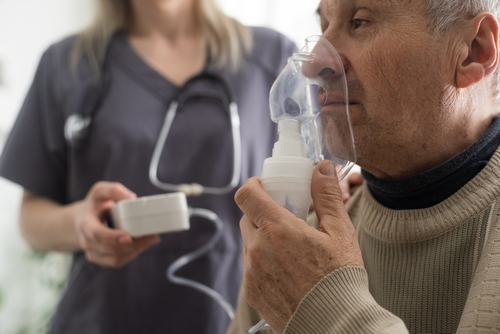Coping with COPD
November 13, 2024
Chronic Obstructive Pulmonary Disease (COPD) is a nasty disease typically caused by some of humanity’s nastier creations, starting with cigarettes and extending to air pollution, chemical fumes, and workplace dust.
COPD causes breathing problems and restricts airflow, making things most of us take for granted – such as walking to our front door or getting dressed – breath-taking, but in the worst way. Gasping for air while doing the simplest of tasks is often the reality for those suffering from COPD.
In the U.S., approximately 16 million people live with the disease, and millions more have it and don’t know it. COPD is a progressive disease. Its symptoms – which typically include a chronic cough, wheezing, shortness of breath, and chest tightness – often develop slowly but worsen over time.
COPD Awareness Month was established each November to raise awareness about the disease, which includes chronic bronchitis and emphysema. Like other health-related observances, COPD Awareness Month seeks to educate the public, highlight the importance of early diagnosis and prevention, and support research and other efforts to improve the quality of life for those living with COPD.
COPD cannot be cured, but it can be treated. The disease reduces the airflow in and out of your airways due to the inflammation and thickening of these airways, the destruction of the walls between the air sacs in your lungs, and/or the lost ability of your airways and air sacs to stretch and shrink back.
SageWest Health Care clinicians address these respiratory challenges through treatments such as oxygen therapy, pulmonary rehabilitation, and medicines that include rescue inhalers or inhaled or oral steroids. Most treatments seek to manage the symptoms and slow the progression of the disease.
Other means to prevent or mitigate the disease are to avoid smoking and exposure to air pollution, exercise regularly, get vaccines to prevent infections, and eat a healthy diet.

If you have COPD, you should see your primary care provider to make sure you are getting the best care possible for your condition. Symptoms worsen over time and make it difficult to do daily activities. And as COPD progresses, the disease can cause complications such as heart problems, respiratory infections, and lung cancer.
If you haven’t been diagnosed with COPD but experience some of its symptoms, see your primary care provider. If you don’t have one, you can find one on the SageWest Medical Group website here.
And if you are currently healthy and want to avoid this four-letter word of a disease, please don’t ever start smoking, or quit smoking immediately.
